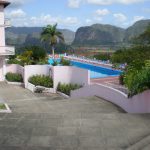The City of Havana (2.1 million) was founded on November 16, 1519 for the third and last time under the name of Villa San Cristóbal de la Habana.
It became the third capital of Cuba in 1556. In 1975 the first Congress of the Communist party was held.
During that event it was first decided that the country required a new political and administrative division, so the different areas would be granted more autonomy because the political, cultural, economic, and social conditions of the country had changed. In 1976, the rubber-stamped division was implemented, re-dividing the country into 14 provinces and 169 municipalities including the Isle of Youth, formerly the Isle of Pines. Then, the larger province of La Habana was divided into two provinces.
The province of the City of Havana was the area that remained the capital of the country due to it being the socio-cultural, economic and political center of the country; the larger province of La Habana is known as an agricultural center.
The City of Havana is sub-divided into 15 municipalities, in an area of about 732 sq. kilometers. UNESCO declared the historical center of the city a World Heritage Site in 1982. In 2011, two additional regional provinces were created southwest and east of Havana: Artemisa and Mayabeque.
You May Want To Visit…
El Morro Castle
El Castillo de los Tres Reyes Magos del Morro, named after the three biblical kings, is a fortress with a lighthouse (built 1589-1630) guarding the entrance to the bay of Havana.
Estadio Latinoamericano
The Gran Estadio, built in 1946 as the top baseball park in Latin America is Cuba’s top stadium. In 2016, presidents Barack Obama and Raúl Castro watched a US–Cuba match during Obama’s historic visit.
Castillo de la Real Fuerza
The Castle of the Royal Force (completed 1577) on the west-ern side of the harbor in Havana (and now home to a shipwreck museum), borders the Plaza de Armas. The fort is considered to be the oldest stone fort in the Americas.
José Martí Memorial
The memorial to José Martí, a national hero of Cuba, is defined by a white 38ft-tall obelisk and marble statue in the Plaza de la Revolución in the Vedado district.
Christopher Columbus Cemetery
The Cementerio de Cristóbal Colón, established in 1876 in the Vedado neighborhood of Havana, is noted for its many elaborately sculpted marble memorials and mausoleums.
Fusterlandia
Jaimanitas, in northwestern Havana, is also known as Fusterlandia, as the home and neighborhood of José Rodriguez Fuster is covered in his vibrant colorful ceramic designs.
Gran Teatro de La Habana Alicia Alonso
The restored (2015) theater, built in 1915, is home to the Cuban National Ballet and the principal seat of the biennial Havana International Ballet Festival.
Playas del Este
Playas del Este, or The Eastern Beaches, stretch some 15 miles east along the north coast away from Havana. They are a very popular tourist spot with hotels, B&Bs and water sports.
El Capitolio
The National Capitol Building (1928) was the seat of government in Cuba until after the Cuban Revolution in 1959; post restoration it will, once again, be the home of the Cuban Parliament.

